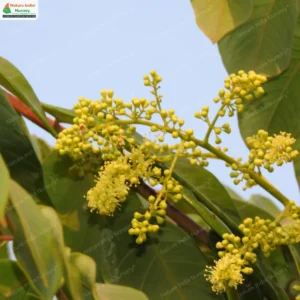Ficus racemosa, commonly known as the Cluster Fig or Gular, is a versatile and significant species that can grow between 20 to 30 meters tall, with a trunk diameter of up to 90 cm. As it matures, the tree often develops a deeply buttressed trunk. Cluster Fig is native to Australia, tropical Asia, and the Indian subcontinent, where it thrives in a variety of habitats, from riverbanks to dry deciduous forests.
Ficus racemosa plays a vital role in its ecosystem, providing food for a wide range of wildlife, including birds, bats, and insects. Its figs are a crucial food source during the dry season, making it a keystone species in its native habitats.
Habitat
Ficus racemosa thrives in a variety of habitats, from riverbanks to dry deciduous forests, in Australia, tropical Asia, and the Indian subcontinent.
Planting and Care
-
Light: Prefers full sun to partial shade, with direct sunlight promoting healthy growth.
-
Soil: Requires well-drained soil that retains moisture without becoming waterlogged.
-
Watering: Regular watering is necessary, especially during the growing season, to keep the soil consistently moist but not soggy.
-
Maintenance: Occasional pruning is beneficial to remove dead or damaged branches and maintain the tree’s appearance.
Additional Information
-
Medicinal Uses: The bark, leaves, and fruits are known for their anti-inflammatory, antibacterial, and antidiabetic properties, and are used in traditional medicine.
-
Cultural Significance: Ficus racemosa is considered sacred and is often associated with various deities. It is commonly planted near temples and used in religious rituals.
-
Ecological Importance: The tree provides food for a wide range of wildlife, including birds, bats, and insects, and its figs are a crucial food source during the dry season.









